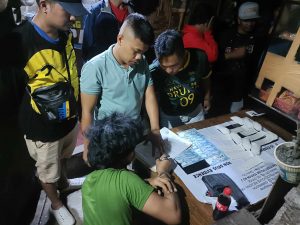A newly released government data bared that in 2018, there were 19 individuals for every 100 in the Davao Region who were poor.
In a Special Release Poverty 2018 report that the regional office of the Philippine Statistics Authority (PSA) released on Wednesday, although the report was marked released on Jan. 20, there were 14 families who were poor out of every 100 families in the region.
The report defined poor as those who “were not able to meet the basic food and non-food requirements,” the data pointed out that the number was lower by 4.6 percentage points compared with the 2015 estimates.
“The magnitude of poor population likewise declined by 15.5% from 1.1 million in 2015 to 969,000 in 2018,” said the report as the agency makes the report every three years.
John Carlo Tria, president of the Davao City Chamber of Commerce and Industry (DCCCI), pointed out there must be steps to sustain the “good news.”
“The good news of the low poverty should be sustained by keeping food prices low so that cost of living remains low as well,” Tria told TIMES in text message.
In terms of families, for every 100 that year, there were 14 who were poor, the report added as the number was down from 18 three years before and 25 about a decade ago.
So how should someone stay out of poverty? He or she must earn P2,159 a month, or for a family of five, it must have a monthly income of P10,797 or P129,559 annually.
“Thus a sole wage earner in a five-member family living in Davao Region had to work hard in getting the entire family out of poverty with at most P355 income per day,” the report added.
Using the same data, the report added, the annual per capita poverty threshold in 2018 was at P25,912, which was 12.15 higher than the figure three years before. Of the amount in 2018, P18,079, or about 70%, was intended for food and the rest for other basic needs.
The same report said that the poverty food threshold of P18,079 a month in 2018, a family of five “must have had an annual income of P90,396 or P248 daily for them not to experience hunger” and the figure was 12% higher then the 2015 level.
“The increases in both per capita poverty and per and per capita food requirement thresholds in the region represent an inflation of 4% on the average per year between 2015 and 2018,” the report added.




